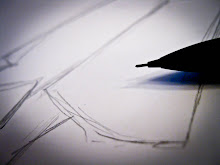"We are interpreters – not merely translators between sender and receiver. What we say and how we say it makes a difference. If we want to speak to people, we need to know their language. In order to design for understanding, we need to understand design."
- Erik Spiekermann
---
"Oh hey, check it out.. that guy uses a Mac."
"Hah, just another brainless follower on the Apple bandwagon. Bet you ten bucks he did it to look 'cool.'"
As much as we hate to admit it, our generation is one that revolves around the concept of materialism. We are quick to judge, quick to make assumptions about everything and everyone we see, based solely on the appearances and qualities of the things people own.
This concept forms the basis of the movie Objectified.
Most of the time, this judgment is done without much thought, really. It's almost subconscious how we notice peoples' outfits and immediately assign them a fitting personality, or look at their cell phone and estimate their social status. Sometimes, these assumptions may even be correct. But what is it about each object that allows us to use such inanimate things (since that is precisely what they are -- things) as society's ruler?
The secret lies in design.
For every object out there -- even something as simple as a toothpick -- there is a lot of thought, time, and effort put into developing the "perfect" design. The sleek curves of a Lamborghini resonate speed, the fastest money can buy. A children's toothbrush has a fat handle and bright colors that communicate fun and excitement. These designs have become so ingrained in our minds that at a point, we hardly recognize them as being designed at all simply because, well, that's just how they've always been. The curved bowl of a spoon and the cupped speakers of headphones aren't unusual; spoons need to contain liquids and headphones need to surround ears. As they say, form often follows function.
The form of Objectified, likewise, follows its function. Done in a documentary format that ties in "how-it's made" and "behind-the-scenes" clips with simple, upbeat music and insightful interviewees, the movie unfolds the world of designers and really allows viewers to understand the life and work that is put into the design process.
The point is, a single design, once developed, has the potential to be revised. Lately, there's been a lot of revising going on. With the design of an object becoming more and more important, people are striving for clean and simple. Touchscreens, where a single surface is the source of every action. Mp3 players with as few buttons as possible. Phones that are, in actuality, tiny computers.
Objectified, also, is simple in its presentation. Short quotes and repetitive actions get the point across without being boring. Quick snapshots of designers at work give the average viewer a glimpse of both past and future.
If content is what a designer wants to say, and form is how they say it, then a concept is the finished product. So does Objectified have a good concept? I'd say it does.
---
If you're interested in learning more about Objectified, take a look at their website at http://www.objectifiedfilm.com. Visit their store to purchase a DVD, or download it to instant queue -- it's also available on Netflix!


No comments:
Post a Comment